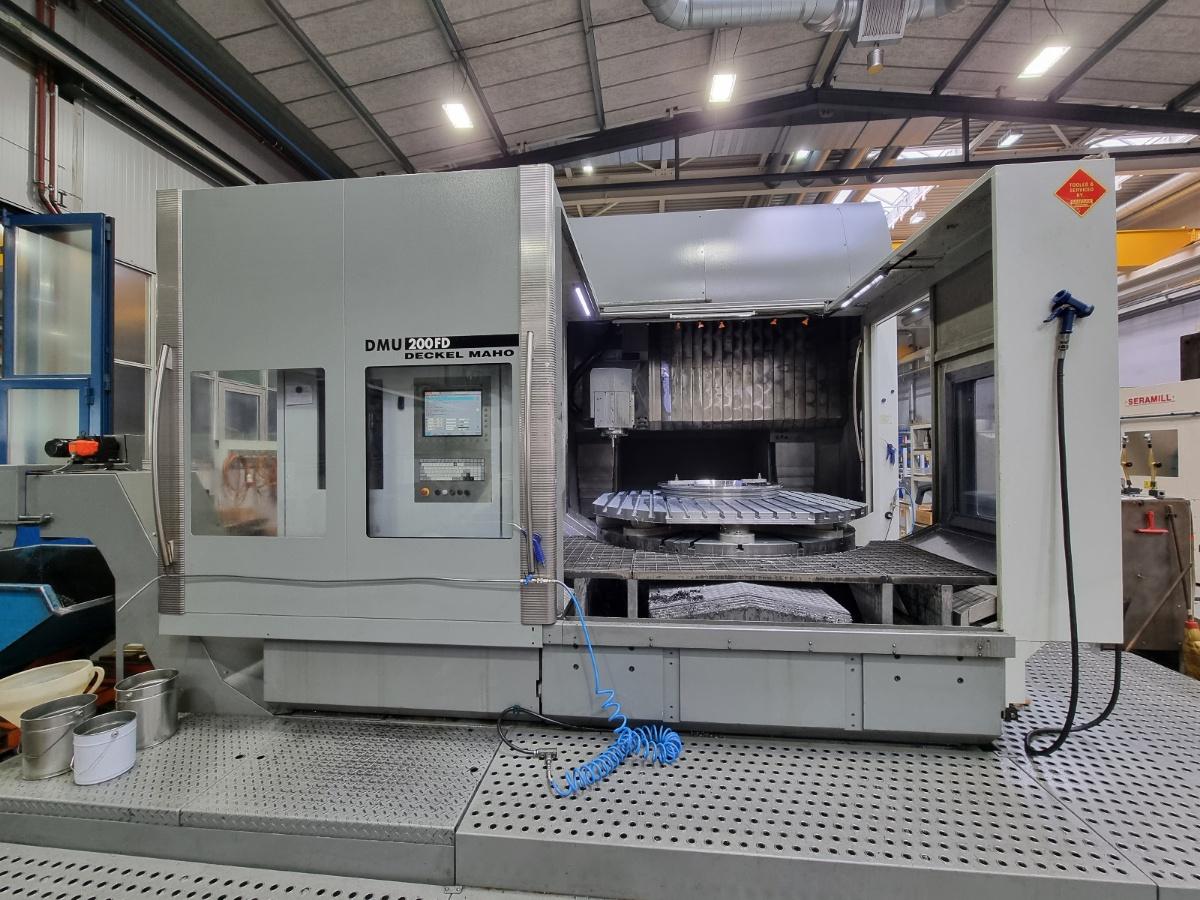How to evaluate the quality and performance of second-hand machining centers?
The quality and performance of second-hand machining centers can be evaluated from the following aspects:
1. Evaluation of machining accuracy
Dimensional accuracy testing
-Standard inspection tools such as calipers, micrometers, coordinate measuring instruments, etc. can be used to measure the dimensions of processed parts. Choose some simple geometric shapes, such as cubes or cylinders, for processing, and then compare the deviation between the design dimensions and the actual processing dimensions. For example, for precision machining centers, the dimensional accuracy deviation should be controlled within ± 0.01mm.
-Check the positioning accuracy and repeatability accuracy of the equipment. Positioning accuracy refers to the degree to which the actual position of moving parts such as the machine tool worktable is close to the commanded position, while repeat positioning accuracy refers to the accuracy of locating the same position multiple times under the same conditions. This can be measured using professional equipment such as laser interferometers. Generally speaking, the positioning accuracy of high-precision machining centers can reach ± 0.005- ± 0.01mm, and the repeated positioning accuracy can reach ± 0.003- ± 0.005mm.
Shape accuracy check
-Observe the shape accuracy of processed parts, such as flatness, straightness, roundness, cylindricity, etc. For flat machining, a knife edge ruler and a feeler gauge can be used to check the flatness; For cylindricity, a roundness meter can be used for measurement. Taking flatness as an example, the flatness error of the plane machined by a high-precision machining center should be controlled within 0.01mm.
Surface roughness assessment
-Measure the surface roughness after processing using a roughness meter. Surface roughness refers to the unevenness of the machined surface with small spacing and small peaks and valleys. Different processing techniques and parameters can affect surface roughness. For general machining centers, the surface roughness Ra value can reach 1.6-3.2 μ m, while precision machining centers can reach 0.8-1.6 μ m.
2. Mechanical system inspection
Spindle system
-Check the radial runout and axial displacement of the spindle. A dial gauge can be used for measurement. Place the dial gauge head in contact with the end of the spindle, rotate the spindle, and observe the swing range of the dial gauge pointer. In general, the radial runout of the spindle should be less than 0.005mm, and the axial displacement should be less than 0.003mm.
-Check the speed range and stability of the spindle. Run the spindle at different speeds and observe for any abnormal vibrations and noise. A stable spindle speed is crucial for ensuring machining quality, especially during high-speed cutting.
-Check if the tool clamping device of the spindle is working properly. Ensure that the tool can be firmly installed on the spindle without loosening during the machining process.
feed system
-Check the motion accuracy of each axis (X, Y, Z, etc.). Manually move the workbench and feel the smoothness of the movement, whether there are any lagging or crawling phenomena. Check the guide rails and screws of each axis for wear, scratches, and other conditions. Severely worn guide rails and screws can affect motion accuracy, and can generally be preliminarily judged by observing surface gloss, checking clearances, and other methods.
-Evaluate the performance of the drive motor in the feed system. The motor should be able to provide sufficient power and respond quickly to ensure feed rate and accuracy during the machining process.
3. CNC system evaluation
System function check
-Verify the basic functions of the CNC system, such as program input, editing, storage, and execution. Ensure the normal input of various machining instructions, including linear interpolation, arc interpolation, tool compensation, and other functions.
-Check if the operating interface of the CNC system is clear, intuitive, and easy to operate. The friendliness of the user interface can affect the efficiency of programming and operation.
-Test the auxiliary functions of the CNC system, such as automatic tool changing, coolant control, chip removal control, etc. For example, checking the tool changing speed, accuracy, and reliability of the automatic tool changing system is crucial for improving machining efficiency in machining centers.
System stability testing
-Run the CNC system for a long time and observe whether there will be any abnormal situations such as crashes, errors, program loss, etc. A complex machining program can be run in a CNC system for several hours to check the stability of the system.
-Check the anti-interference ability of the CNC system. Turn on some equipment around the machine tool that may generate electromagnetic interference, such as welding machines, large motors, etc., and observe whether the CNC system can work normally.
4. Inspection of tool magazine and tool changing system
Tool storage capacity and tool specifications
-Confirm whether the capacity of the tool magazine meets the processing requirements. Different machining tasks require different quantities and types of cutting tools, and the tool magazine capacity should be selected according to the actual situation. At the same time, check the maximum size and weight of the tools that can be accommodated in the tool magazine to ensure that the required tools can be installed.
Tool changing speed and accuracy
-Test the tool changing speed of the tool changing system, which directly affects the machining efficiency. Observe whether the tool changing process is smooth and accurate, and whether there are any situations such as tool dropping or loose clamping. The reliability of the tool changing system can be checked through multiple manual and automatic tool changing operations.
5. Inspection of working fluid and lubrication system
Working fluid system
-Check the cleanliness of the working fluid tank, there should be no excessive impurities or metal shavings in the working fluid. The cleanliness of the working fluid can affect the machining quality and the service life of the machine tool.
-Check the working status of the working fluid pump, including whether the flow rate and pressure are normal. The working fluid pump should be able to provide sufficient working fluid flow to ensure cooling and chip removal in the machining area.
-Check if the filtration system of the working fluid is effective. A good filtration system can remove impurities from the working fluid and extend its service life.
lubrication system
-Check if the oil level of the lubrication system is normal and if the quality of the lubricating oil is good. Regular lubrication is the key to ensuring the normal operation of machine tool mechanical components.
-Check whether the oil pump of the lubrication system is working properly and whether the lubricating oil can be evenly distributed to various parts that need lubrication, such as guide rails, screws, etc.



